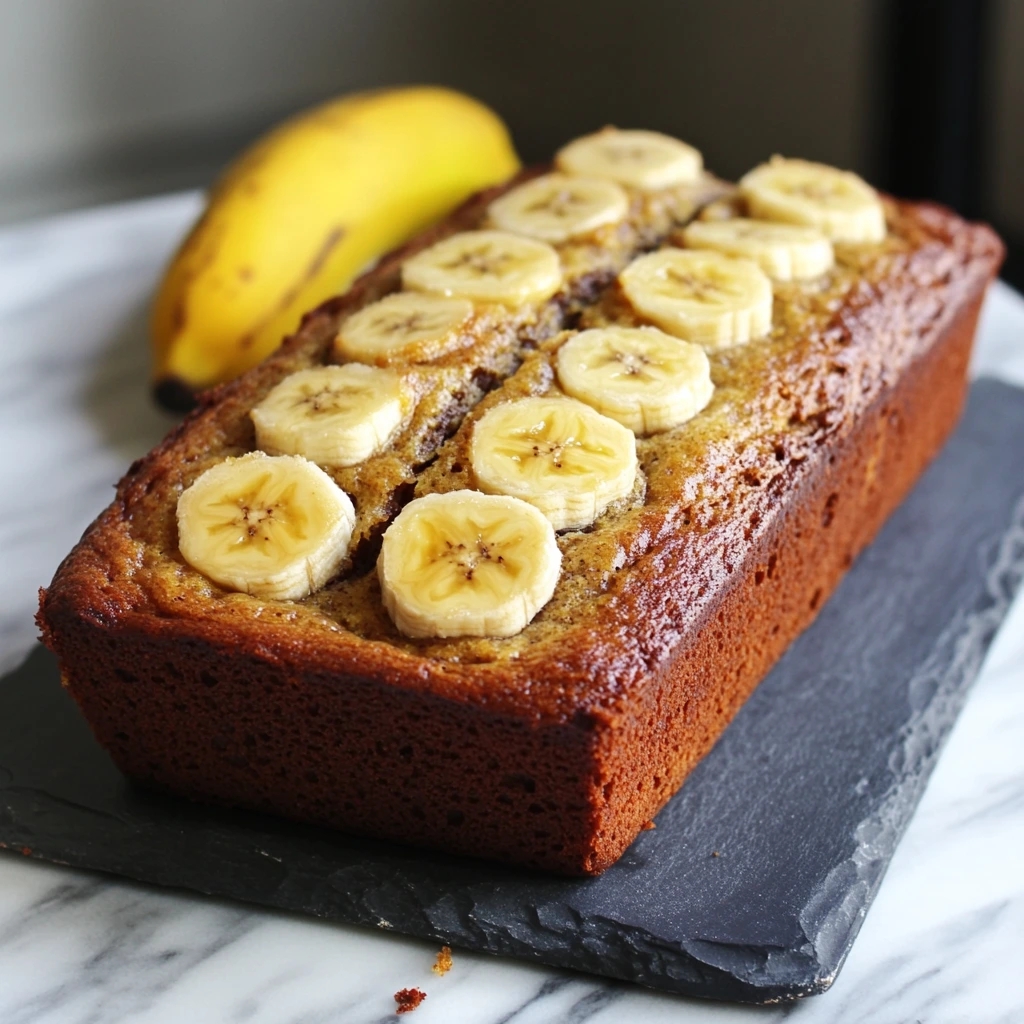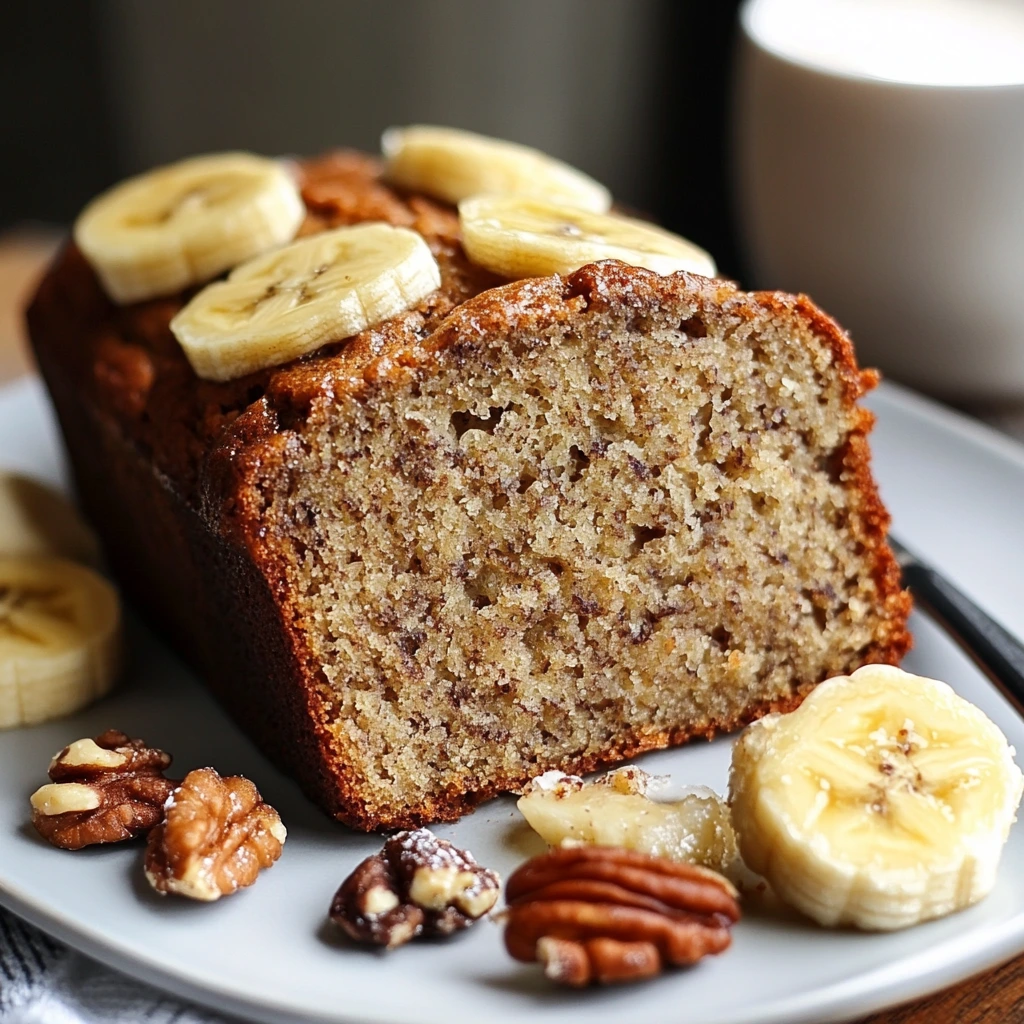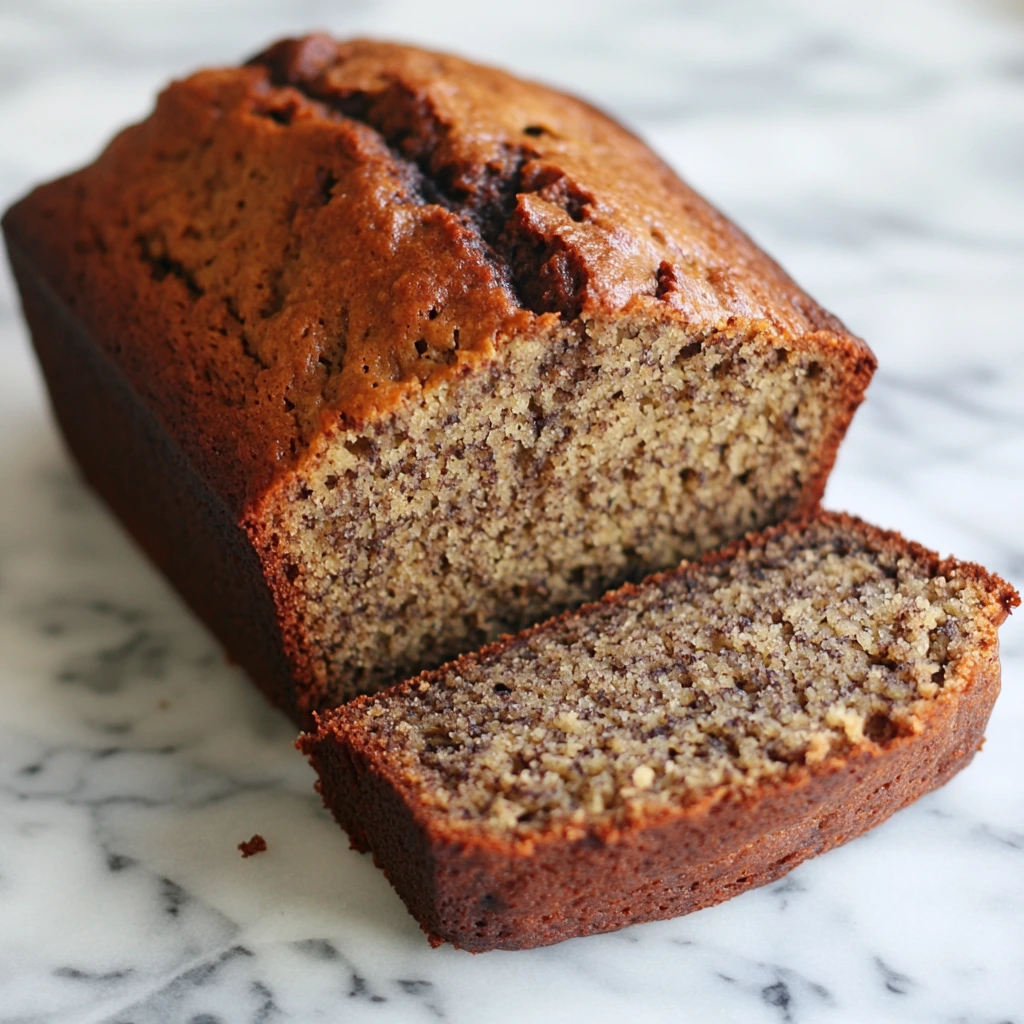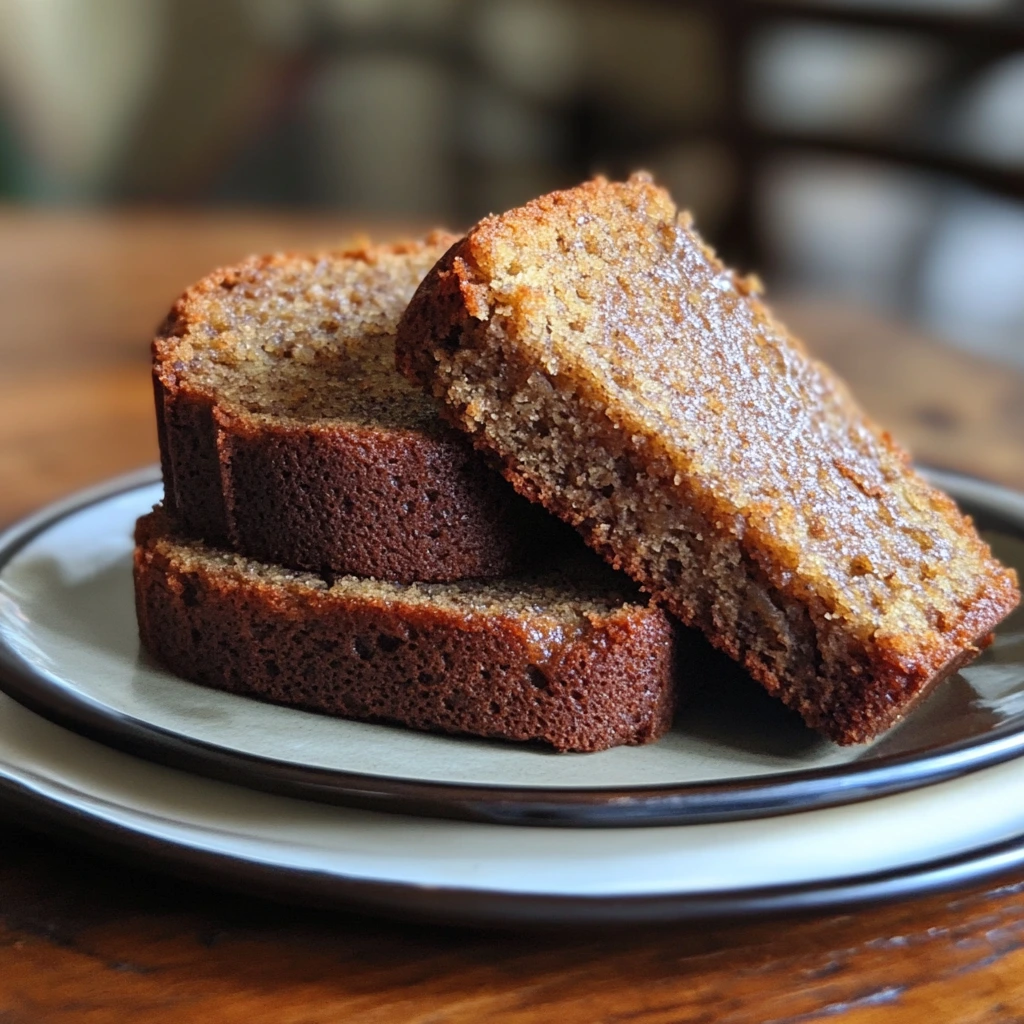Banana bread is a beloved classic, often filling kitchens with a warm, comforting aroma. Whether you’re baking it for breakfast, a snack, or a special occasion, banana bread is a versatile treat that anyone can enjoy. But even the most experienced bakers can run into trouble when making it. If you’ve ever ended up with a dense, overcooked, or uneven loaf, you’re not alone. The good news? Most banana bread mishaps stem from a few common mistakes, and understanding the biggest banana bread mistake people make can help you avoid them!
In this post, we’ll dive into the biggest banana bread mistake most people make when baking banana bread, as well as other key missteps to avoid. With these tips, you’ll be able to bake perfect, moist banana bread every time. Let’s get started and ensure that your next loaf is a delicious success!

Why Banana Bread Goes Wrong: The Most Common Mistake
Banana bread seems simple enough, but many bakers run into issues that can make their loaves turn out less than perfect. One of the biggest banana bread mistakes people make when baking banana bread is overmixing the batter. This error, though often overlooked, can significantly impact the texture and consistency of your bread. Understanding why this happens and how to avoid it will help you achieve a light, moist, and perfectly textured loaf every time.
The #1 Mistake: Overmixing the Batter
Overmixing is, hands down, the biggest banana bread mistake. When flour is mixed too vigorously, it causes the gluten in the flour to develop, which can result in a tough and chewy texture instead of the light, airy crumb that you expect from a good banana bread.
This happens because gluten is what gives bread its structure, but in banana bread, you don’t want to develop too much gluten, as the goal is to create a soft and tender loaf. The more you mix, the more gluten you form, and this leads to a denser loaf. So, while it’s important to mix your ingredients thoroughly to combine them, you should stop once everything is just incorporated to avoid the biggest banana bread mistake.
Other Common Issues to Watch For
While overmixing is the primary biggest banana bread mistake, there are a few other key issues that can cause your banana bread to go wrong.
- Using Unripe Bananas: Ripe bananas are essential for perfect banana bread. Overripe bananas are sweeter, have more moisture, and blend better into the batter. Using bananas that aren’t ripe enough can result in a dry and less flavorful loaf.
- Incorrect Measurements: Precision is key when baking, especially when it comes to banana bread. Using too much or too little of any ingredient, such as flour, sugar, or leavening agents, can throw off the consistency and structure of your bread. Always measure your ingredients carefully to avoid the biggest banana bread mistake.
- Not Adjusting for Altitude or Humidity: In some cases, environmental factors like altitude or humidity can affect how your banana bread turns out. Higher altitudes may require adjustments to the baking time or ingredient quantities, while excess humidity could make the batter wetter than usual. Failing to make these adjustments can lead to the biggest banana bread mistake.
Signs Your Banana Bread Has Gone Wrong
There are a few telltale signs that your banana bread has fallen victim to one of these common mistakes:
- Dense, Heavy Texture: If your banana bread is too dense or heavy, overmixing is likely the issue. A proper banana bread should be moist, but light and airy. This is another classic result of the biggest banana bread mistake.
- Cracked or Uneven Top: Overmixing can also lead to uneven rising, causing your loaf to crack or bake unevenly. This is a sign that the batter didn’t achieve the right consistency or that it was subjected to too much handling, making it another sign of the biggest banana bread mistake.
- Uncooked Middle: Underbaking, often caused by rushing the process or not properly testing the bread, can leave the center uncooked. This is typically the result of improper oven temperature or not allowing the loaf enough time to bake through completely. This can happen if you skip the necessary checks to avoid the biggest banana bread mistake.
By recognizing these common mistakes and understanding their causes, you’ll be on your way to mastering the perfect banana bread. In the following sections, we’ll explore how to avoid these pitfalls and offer practical tips for perfect banana bread every time.
Ingredients Matter: Choosing the Right Components
While baking banana bread, the ingredients you choose can make or break your loaf. From the type of bananas you use to the flour and leavening agents, each component plays a crucial role in achieving the perfect banana bread. Understanding how to select the right ingredients and how they interact will help you create a delicious, moist, and flavorful loaf every time.

Why Overripe Bananas Are Essential
The key to a moist and flavorful banana bread lies in the bananas themselves. Ripe bananas, especially overripe ones, are ideal for baking. As bananas ripen, their starches break down into sugars, which naturally sweeten the fruit. This sweetness contributes to the flavor of the bread without needing excess sugar.
Ripe bananas also contain more moisture, which is crucial for ensuring a moist loaf. When underripe bananas are used, they may not break down as easily during mixing, leading to a drier bread. Additionally, unripe bananas can have a starchy taste, making the bread lack the rich flavor that overripe bananas bring.
Tip: Look for bananas with plenty of brown spots or even fully brown bananas. If you’re in a rush, you can speed up the ripening process by placing them in a paper bag for a day or two. Alternatively, for a quick fix, you can place them in the oven for 15–20 minutes at 300°F (150°C), letting them soften and darken.
The Role of Baking Soda in Perfect Loaves
Baking soda is another essential ingredient in banana bread that shouldn’t be overlooked. This leavening agent reacts with acidic ingredients, such as the overripe bananas or yogurt, to help the bread rise and become light and fluffy. Without baking soda, your bread will lack lift and may turn out dense and heavy.
However, be careful with the amount you use. Too much baking soda can leave a metallic aftertaste, while too little can result in a flat loaf. The amount needed in a recipe is generally proportionate to the other ingredients, so it’s essential to follow the recipe’s instructions carefully.
Tip: Make sure your baking soda is fresh. If it’s been sitting around for too long, it may lose its potency, which can prevent your banana bread from rising properly.
High-Quality Add-Ins for Extra Flavor
Banana bread can be customized with various add-ins like nuts, chocolate chips, or spices. These ingredients add not only flavor but also texture, elevating the bread from good to great. Here’s how you can make the most of these additions:
Nuts: Walnuts, pecans, or almonds are classic additions to banana bread. They provide a satisfying crunch and a rich, nutty flavor that complements the sweetness of the bananas. Always chop the nuts into smaller pieces so they don’t overpower the texture of the bread. Toasting the nuts before adding them to the batter can bring out even more flavor.
Chocolate Chips: If you’re a fan of sweet treats, chocolate chips are a fantastic way to add richness and decadence to your banana bread. Dark or semi-sweet chocolate chips tend to balance the sweetness of the bread, while milk chocolate can make the loaf extra indulgent. You can also swirl in peanut butter or caramel chips for a unique twist.
Spices: Cinnamon and nutmeg are common spices used in banana bread, enhancing the flavor without overpowering the bananas. A pinch of ground ginger or cloves can also add warmth and complexity to your loaf. If you’re feeling adventurous, try experimenting with cardamom or allspice for a more exotic flavor.
Tip: When adding chocolate chips, nuts, or dried fruit, be sure to fold them gently into the batter at the end of the mixing process. This prevents them from sinking to the bottom of the loaf during baking.
Balancing Add-Ins to Avoid Overpowering the Bread
While it’s tempting to add lots of extras to your banana bread, it’s important to strike a balance. Too many add-ins can overwhelm the bananas and cause the loaf to become too heavy or uneven. Typically, 1/2 to 1 cup of add-ins is sufficient for most recipes. If you’re adding more than one type of ingredient (like both nuts and chocolate chips), consider reducing the quantity of each so that the banana flavor remains the star.
Mastering the Mixing Process
The way you mix your banana bread batter is just as important as the ingredients themselves. Proper mixing ensures that the ingredients are evenly distributed throughout the batter, which is key to achieving the right texture and consistency. However, the mixing process requires some careful attention. Too much or too little mixing can lead to undesirable results, such as a dense loaf or unevenly distributed add-ins. In this section, we’ll explore the key steps and techniques for mastering the mixing process to guarantee a perfect banana bread every time.
Properly Creaming Butter and Sugar
One of the first steps in mixing banana bread is creaming the butter and sugar together. This process is essential for achieving a light and airy texture. When you cream these two ingredients, the sugar crystals help incorporate air into the butter, which creates tiny bubbles that expand during baking. This results in a lighter loaf with a desirable crumb.
To cream butter and sugar properly, start with softened (but not melted) butter. Using a hand mixer or stand mixer on medium speed, beat the butter and sugar together until the mixture is pale and fluffy. This can take about 3–5 minutes. Avoid rushing this step, as insufficient creaming will lead to a denser bread.
Tip: If you’re using a vegan butter substitute, ensure that it’s soft enough to mix thoroughly. Cold or hard vegan butter will not incorporate air as effectively, potentially affecting the texture of your bread.

Folding Wet and Dry Ingredients Together
Once you’ve creamed the butter and sugar, the next step is to combine your wet and dry ingredients. It’s important to handle this step with care. Overmixing during this phase can result in tough, dense banana bread. The key is to gently fold the ingredients together to avoid activating too much gluten.
When folding, you’ll first add the dry ingredients—typically flour, baking soda, and salt—into the wet ingredients (butter mixture and mashed bananas). Using a spatula or spoon, gently fold the dry ingredients into the wet until just combined. Be sure to stop as soon as the flour is incorporated, even if a few streaks of flour remain. Overmixing at this stage will cause the bread to become tough and dense.
Tip: If you’re adding delicate ingredients like chocolate chips, nuts, or dried fruits, fold them in last to avoid crushing or overworking them.
Adjusting for Consistency Issues
Sometimes, the batter may seem too thick or too thin. If your banana bread batter is too thick, it can be difficult to mix and may result in uneven distribution of ingredients. On the other hand, if it’s too thin, the bread may not hold together properly, leading to a flatter loaf. If you find that your batter is too thick, you can add a tablespoon or two of milk or yogurt to loosen it up. Be careful not to add too much liquid, as this can make the bread too moist and lead to sogginess.
If your batter appears too runny, it could be due to using overly ripe bananas or too much liquid in the recipe. To correct this, you can add a small amount of flour, but do so gradually, as adding too much will alter the texture.
Tip: Use a spatula to gently scrape down the sides of the bowl to ensure that all the ingredients are properly incorporated. This will help you avoid lumps or pockets of unblended flour.
Mastering the mixing process is crucial for achieving the desired consistency and texture in your banana bread. By carefully creaming butter and sugar, gently folding ingredients, and adjusting the batter’s consistency as needed, you can avoid common pitfalls like dense or uneven loaves. Practice and attention to detail will ensure that your banana bread turns out light, moist, and perfectly baked.
Baking Like a Pro: Timing and Temperature
Baking banana bread may seem straightforward, but the temperature and timing of your bake are key to ensuring that your loaf comes out perfectly every time. If you’ve ever pulled out a loaf only to find it too raw in the center or overcooked around the edges, you’ve likely encountered the importance of getting the temperature and baking time just right. In this section, we’ll dive into the critical aspects of timing and temperature, offering professional tips to guarantee a perfectly baked banana bread.
The Right Oven Temperature: Why It Matters
When it comes to baking banana bread, the temperature of your oven plays a pivotal role. If your oven runs too hot, the outside of the loaf may bake too quickly, creating a crusty exterior while leaving the inside undercooked. On the other hand, an oven that is too cool can lead to a loaf that bakes too slowly, causing it to dry out or develop an uneven crumb texture.
For most banana bread recipes, the optimal temperature is 350°F (175°C). This temperature allows the bread to bake evenly, giving it a golden-brown crust while allowing the inside to cook thoroughly without overbaking. However, every oven is different, and some may run hotter or cooler than others. It’s always a good idea to use an oven thermometer to check your oven’s actual temperature for the best results.
Tip: If you notice that the top of your banana bread is browning too quickly while the inside is still raw, you can cover the top loosely with aluminum foil. This helps prevent overbaking while allowing the loaf to finish cooking through.

Preheating: Don’t Skip It
Preheating your oven is a crucial step that ensures the temperature is consistent from the moment you place your loaf inside. Placing the batter into a cold oven can result in uneven baking, leading to a loaf that rises unevenly or becomes too dense. Always allow your oven to fully preheat before putting your banana bread in. Preheating typically takes about 10–15 minutes, depending on the oven, but it’s an important step that shouldn’t be rushed.
Tip: If you’ve been baking for a while, you might have noticed that ovens can lose heat when you open the door to check on your loaf. Try to avoid opening the oven too frequently during baking, as this can cause temperature fluctuations that affect the rise and texture of your bread.
Determining the Perfect Baking Time
The baking time for banana bread typically ranges from 50 to 70 minutes, depending on the size of the loaf pan and the specific recipe. A standard 9×5-inch loaf pan will generally take about 60 minutes to bake, but if you’re using a smaller or larger pan, the time may vary.
Here’s a helpful guide for determining the ideal baking time:
- Standard 9×5-inch loaf pan: 60 minutes
- Smaller 8×4-inch loaf pan: 50–55 minutes
- Larger 10×5-inch loaf pan: 65–70 minutes
If you’re unsure whether the banana bread is done, you can perform a toothpick test. Insert a toothpick or cake tester into the center of the loaf. If it comes out clean or with only a few crumbs attached, the bread is done. If the toothpick comes out wet or sticky, the bread needs more time to bake.
Tip: If your banana bread is browning too quickly but isn’t done in the center, lower the oven temperature by 10–15 degrees and continue baking for a few more minutes. This will allow the bread to cook through without burning the top.
Adjusting for Different Pans and Sizes
The type and size of your baking pan can significantly affect how your banana bread bakes. A dark-colored pan, for example, absorbs more heat and may cause your loaf to brown faster than a light-colored pan. If you use a darker pan, you may need to lower the oven temperature by 25°F (about 15°C) to prevent overbaking.
Additionally, the size of the pan also impacts baking time. Larger pans result in a shallower loaf, which may bake faster, while smaller pans lead to a taller loaf that needs more time to cook through. Always keep an eye on the bread as it bakes, and adjust the time accordingly based on the size and material of the pan.
Tip: If you’re baking multiple loaves at once, make sure to leave adequate space between the pans to allow for even heat circulation. This ensures that each loaf bakes properly and avoids uneven results.
Cooling for Perfection
Once your banana bread is done baking, it’s important to allow it to cool properly. Cooling helps the loaf set, allowing you to slice it without it falling apart. Place the pan on a wire rack for at least 10–15 minutes before removing the bread from the pan. After removing it, let the bread cool completely before slicing to allow the texture to stabilize.
Tip: If you’re impatient and can’t wait to slice your banana bread, you may find that it’s a bit softer and more crumbly right after it comes out of the oven. This is completely normal—just allow it to cool a little longer for the best results!
Troubleshooting Banana Bread Problems
Even with the best recipes and ingredients, sometimes banana bread can fall short of expectations. Whether you’re dealing with a loaf that’s too dry, too dense, or lacks flavor, understanding common banana bread problems and how to solve them is essential for consistently perfect results. Let’s dive into some of the biggest banana bread mistakes people make and how to avoid them for your next batch.
1. The Biggest Banana Bread Mistake: Overmixing the Batter
One of the biggest banana bread mistakes people make when baking banana bread is overmixing the batter. While it’s important to combine your ingredients, mixing the batter too vigorously activates the gluten in the flour, which results in a dense and tough loaf. To avoid this, always mix gently, folding until the ingredients are just combined. A few lumps are okay—this will give you the light, moist banana bread you crave.
2. Too Much Flour: A Common Cause of Dense Banana Bread
Another of the biggest banana bread mistakes is adding too much flour. If your measurements are off, or you pack the flour into the measuring cup, you might end up with a heavy, dry loaf. To ensure accurate measurements, scoop the flour into your measuring cup with a spoon, then level it off with a knife. This simple step can help prevent a dense loaf.
3. Under-Ripened Bananas: A Mistake That Affects Flavor and Moisture
Using bananas that are too green is one of the most overlooked biggest banana bread mistakes. Underripe bananas don’t have the moisture or natural sweetness needed for the perfect banana bread. Overripe bananas, with their brown spots, provide more moisture and sweetness, resulting in a better loaf. Make sure your bananas are fully ripe before adding them to the batter.
4. Overbaking: The Key to Avoiding Dry Banana Bread
Overbaking your banana bread is another one of the biggest banana bread mistakes that can lead to a dry, crumbly texture. To avoid this, always start testing your bread with a toothpick around 50 minutes into baking. If it comes out clean, your bread is ready to come out of the oven. Checking early and adjusting your baking time can keep your banana bread moist and tender.
5. Incorrect Moisture Levels: A Dry Loaf Awaits
If your banana bread turns out dry, it might be due to insufficient moisture. This could be from using too little banana, or not adding enough moisture-rich ingredients like yogurt, milk, or oil. A common biggest banana bread mistake is not using enough wet ingredients to balance the dry ones. Be sure to include the recommended amount of bananas and consider adding a bit of yogurt or milk for extra moisture.
6. Sunken Center: A Result of Overmixing and Overbaking
A sunken center in banana bread is often caused by overmixing the batter or overbaking. Overmixing weakens the structure of the batter, which can lead to a collapse. Additionally, excessive leavening agents like baking soda or powder can cause the bread to rise too quickly, and then sink once the batter has no structure left to support it. To avoid this, mix gently and be cautious with leavening amounts. Don’t open the oven door too soon, as a drastic temperature change can also cause the bread to sink.
7. Too Sweet? Adjust for Your Taste
Sometimes banana bread turns out too sweet, which can be due to overripe bananas or excessive sugar in the recipe. If you notice your banana bread is too sweet, one of the biggest banana bread mistakes may be using bananas that are too ripe or a sugar-heavy recipe. Consider reducing the sugar in your recipe and using slightly less ripe bananas for a more balanced sweetness.
8. Overbrowning on Top: A Baking Temperature Issue
If your banana bread is browning too quickly on top, it’s often a sign that the oven temperature is too high. Darker pans can also contribute to faster browning. Lower the oven temperature by 10–15°F and use an oven thermometer to ensure it’s accurate. If the top is getting too dark before the bread is fully baked, cover it loosely with aluminum foil to prevent further browning.
By understanding and avoiding these biggest banana bread mistakes, you’ll be on your way to baking the perfect loaf every time. From gentle mixing to adjusting the moisture content, small tweaks can make a huge difference in your final result. Happy baking!
Chef’s Note: The Secret to Perfect Banana Bread
As a chef, there’s nothing quite as satisfying as pulling a perfectly baked loaf of banana bread from the oven, the aroma filling the kitchen, and knowing you’ve nailed the process from start to finish. Remember, banana bread is a forgiving recipe—there’s room for creativity, but precision is key. Pay attention to your ingredients, avoid overmixing, and always bake with patience. Every loaf teaches us something new, and even the occasional mistake is a step toward mastery. So, don’t be afraid to experiment, trust your instincts, and soon enough, you’ll have a perfectly golden, moist, and delicious banana bread every time. Happy baking!
